If you’ve been following me from the beginning of my journey, you’ve watched as I’ve learned my way around the canner through trial and error.
As a southern California “beach girl”, I never even saw a canner or heard of canning until I moved to the Southeast and was in my young adult years. I suppose I knew in the back of my mind that it was a way of preserving foods back in the “old days”, but I had no idea people still did it!
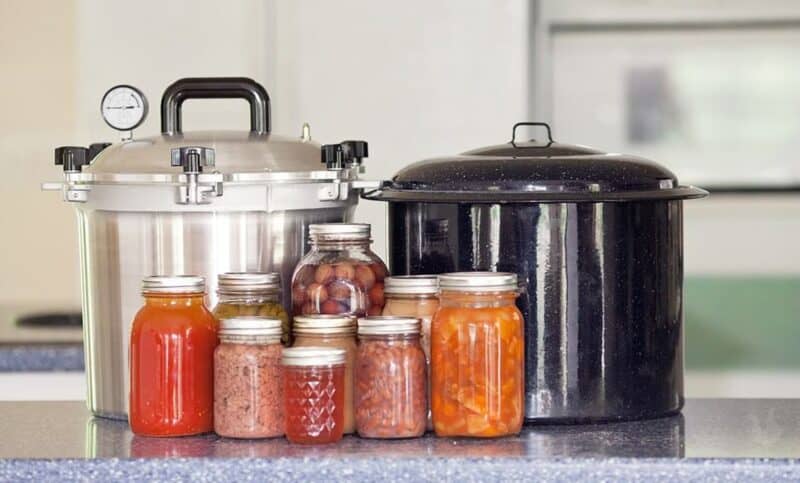
So what would make me want to learn to can? I mean, isn’t it hard work? Wouldn’t it just be easier to run to the grocery store and buy what I need?
As I hung out with more savvy ladies and watched them grow their gardens and can their food, it didn’t take me long to realize the benefits of learning to can.
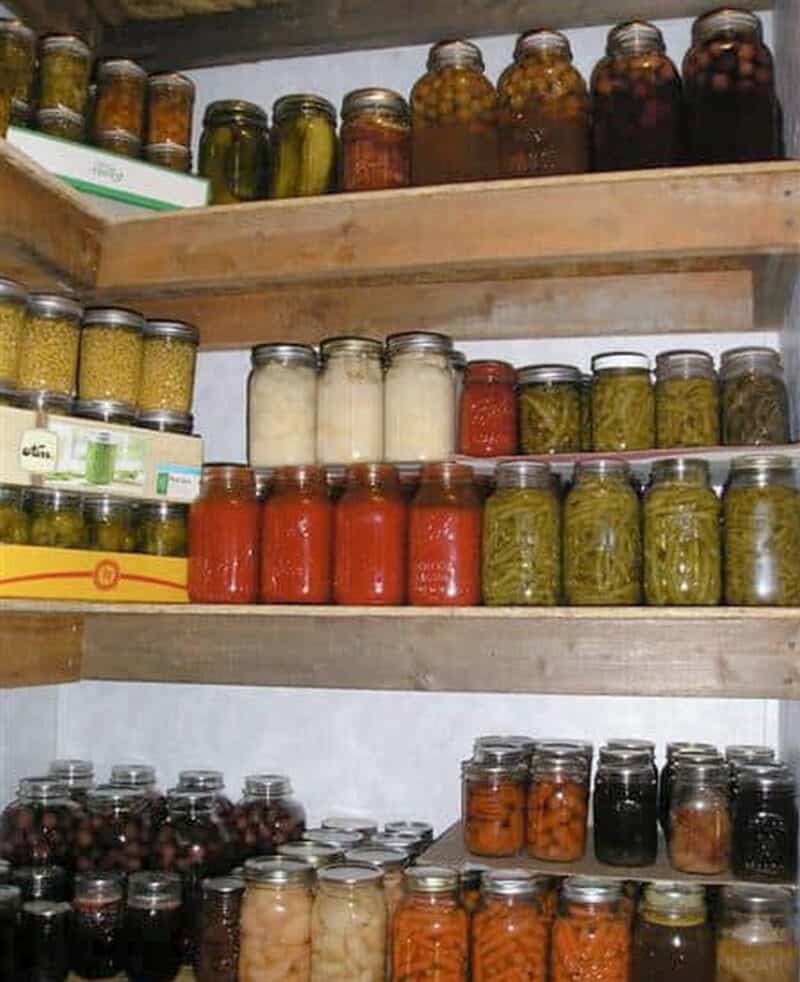
Save More Money
Before I got into canning, I was huge into coupon shopping. I’d diligently clip coupons and spend hours sorting them in my expandable pocket folders organized into different categories.
I’d hit the grocery stores late at night or early in the morning, when there would be fewer shoppers to compete with.
I’d hand the cashier stacks of clipped coupons and watch my bill shrink to nearly nothing, sometimes even dipping into the negative territory- meaning that at times they’d actually give me money. I’d walk out of the store with bags of free or close to free food. And I was thrilled!
But do you know what I noticed after a couple of years of doing this? Most of what I was getting was junk!
Almost everything was highly processed foods or toiletries filled with questionable ingredients. I rarely found super great deals on fresh, whole foods or natural products.
As my family became more aware of the importance of what we put in and on our bodies, I found that it just wasn’t worth the time and effort to do coupon shopping anymore, as not much of what was on sale was something we wanted to eat.
It wasn’t that we became food snobs, we just wanted to eat real food. Not something concocted in a lab. You know?
We figured it would be a good idea to start a garden to supplement our grocery bill. If we could grow a lot of our own produce, it would really help save money each month.
And then one day I had a light bulb moment when I realized how much money I could save if I could grow AND preserve our food. Think of the savings!
Contrary to what some people might tell you, canning does not have to be an expensive investment up front.
Fruits, jellies, jams, preserves, pickles, relish, sauerkraut, pie fillings, syrups, chutney, salsa, tomato sauce, tomato paste, tomato juice, whole or chopped tomatoes, ketchup, BBQ sauce, pickled eggs, applesauce, pear sauce… all of these things can be canned in an inexpensive water bath canner.
A water bath canner can be something as simple as a large stockpot with a lid- something you probably already have in your kitchen! They can also be found second-hand for very cheap. I found mine at a yard sale for $5.
Start with a water bath canner, and save your pennies for a quality pressure canner, such as an All American Pressure Cooker/Canner. These ARE an investment, but they’ll last for generations if you take care of them.
Canning jars can also be found previously-owned for a good deal. I often find boxes of them at yard sales for $3/dozen (the maximum I’ll pay).
I never ever buy them new. Just remember that when you’re buying used jars, it’s important that you check the rims of the jars to make sure they aren’t cracked or chipped, which would render them useless for canning.
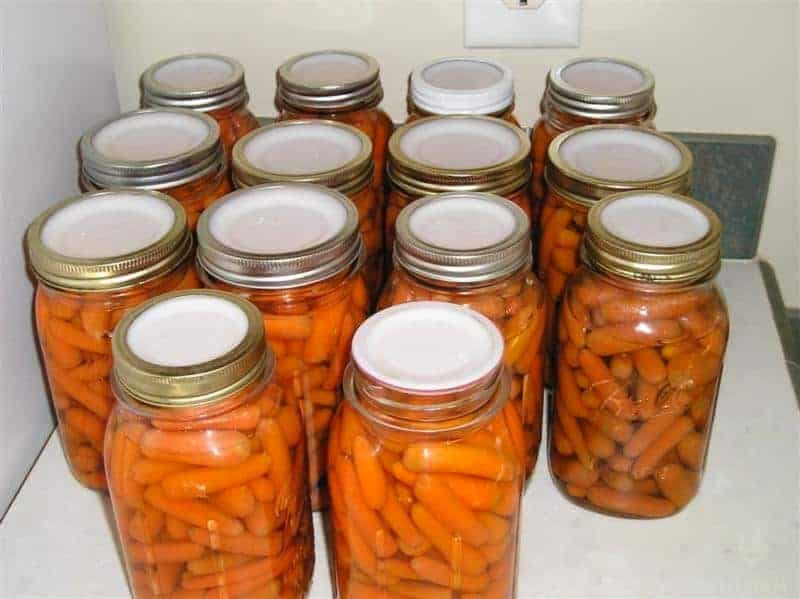
Even if you don’t have the time or space to garden, you can still save money by canning! I know plenty of people who stock up on grocery store produce sales to can for months ahead. You can also buy in bulk at the Farmer’s Market, or from a You-Pick farm, and preserve that as well.
Get creative and use what resources are available in your area. Food co-ops and even buying clubs such as Sam’s and Costco can also be a great way to get large quantities of food for less. If you can’t afford it all by yourself, go in with a friend!
Buying in-season produce saves money, and preserving that bulk will greatly reduce your future grocery bills.
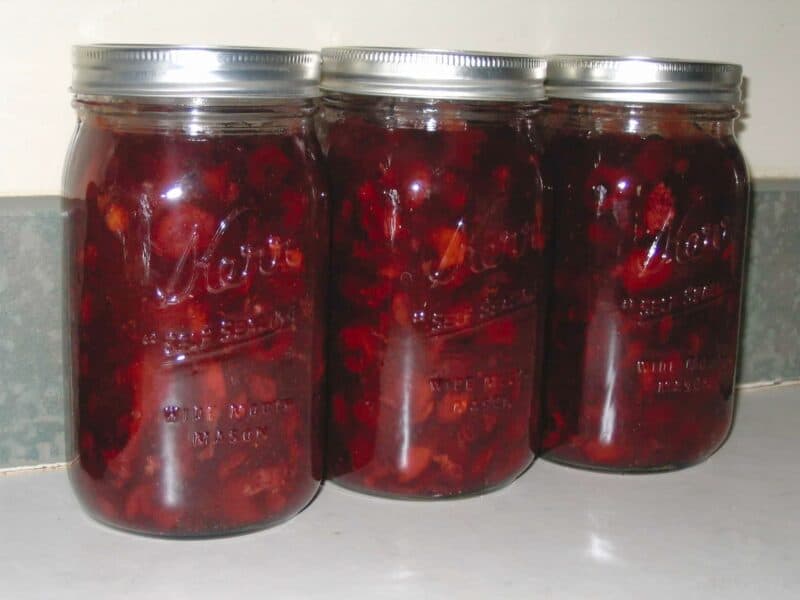
Avoid Dangerous Additives and Preservatives
Many of the foods that can be purchased in cans at the grocery store have extremely unhealthy ingredients in them: High Fructose Corn Syrup, TBHQ, BHT, sugar, excessive amounts of salt, and BPA lining in the cans. Don’t believe me? Just go the store and start reading labels.
Soups in particular are almost impossible to find without nasty ingredients. Health food stores sell All-Natural canned goods, and some companies are now offering foods in BPA-free cans, but you’ll pay a pretty penny for them.
None of these ingredients are necessary for home-canned goods. Not even salt. When you can it yourself, you are in full control of what your family is eating. Glass jars are completely safe and BPA-free.
And, while some metal canning lids do have BPA in them, Tattler Reusable Canning Lids have always been BPA-free.
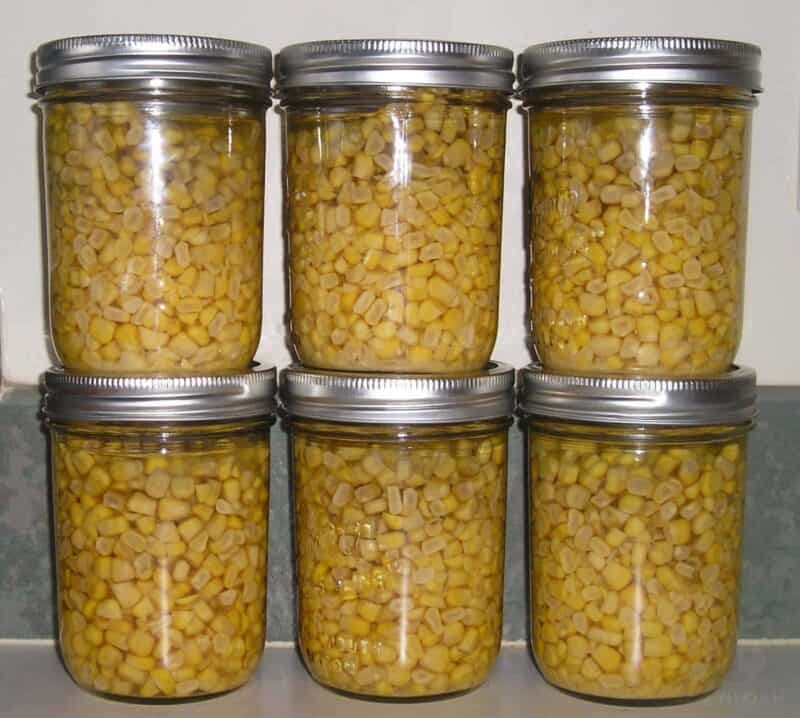
Effectively Boycott Genetically Modified Foods
If avoiding GMOs is important to you, learning to can your own foods will empower you to take back control of what you and your family are eating.
Many factory canned goods, especially soups, pie fillings, and almost all condiments, have soy, corn, and sugar from sugar beets added to them in some form or another.
Unless what you are buying is labeled “organic” or “GMO Project Verified”, you can almost be 100% certain that these ingredients are from genetically modified foods.
By buying from a reputable non-GMO grower- or better yet, growing it yourself!- you can be sure that what you are canning holds to the standards that are important to you and your family.
One tip to keep in mind: Many pie filling recipes call for Clear Jel as a thickening agent (instead of cornstarch). Clear Jel is not non-GMO. A better alternative would be to use Cornaby’s Ultra Gel, which states that it is non-GMO.
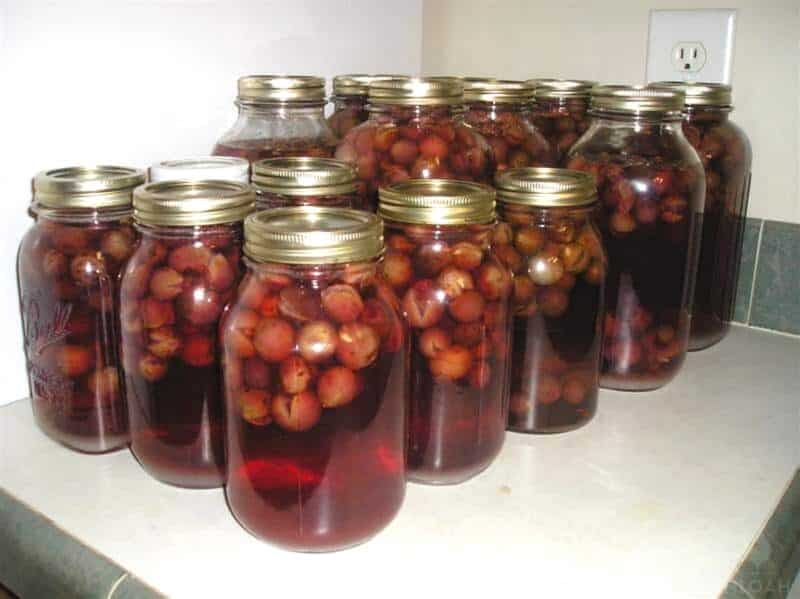
Benefit From More Nutrition
When you can foods at their peak ripeness, you’ll be enjoying all of the benefits of the higher nutrient count of those foods.
Although canned foods are heated during canning, very little nutrients are lost in the process. Consume your home-canned foods within a year for best nutrition, as vitamins and minerals begin to diminish over time.
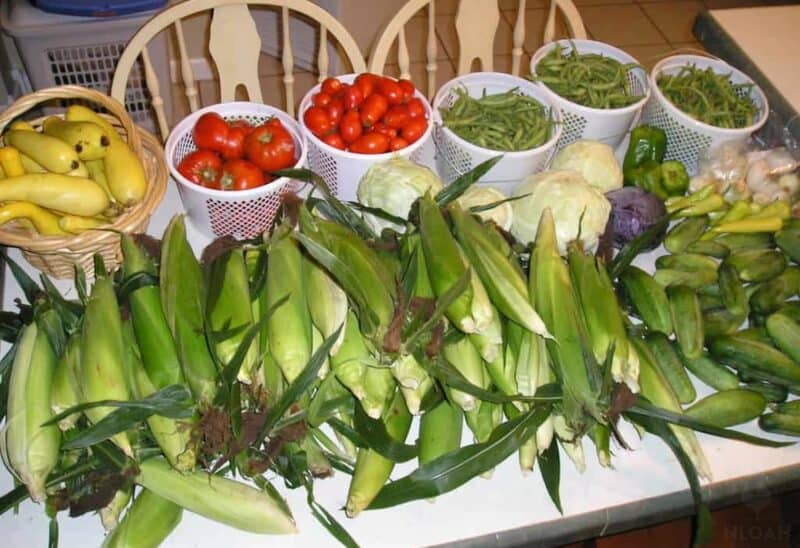
Support Your Local Economy
When you buy locally grown, in-season produce, not only are you getting the best nutrition and best prices, you’re also supporting your neighboring farmer and the local economy.
You are keeping another farming family in business, and supporting their efforts to continue to supply your area with freshly grown, quality foods. This is important.
Enjoy A Greater Variety of Foods
When you learn how to can your own foods, you will find that your pantry suddenly has the potential to be stocked with all sorts of unique goodies that you’d never find available at your local market.
Commercial growers are limited to the varieties they can grow, but home gardeners and small-scale farmers are free to grow all sorts of fun fruits and veggies, all of which can be preserved for many years. Even wild foraged foods can be canned!
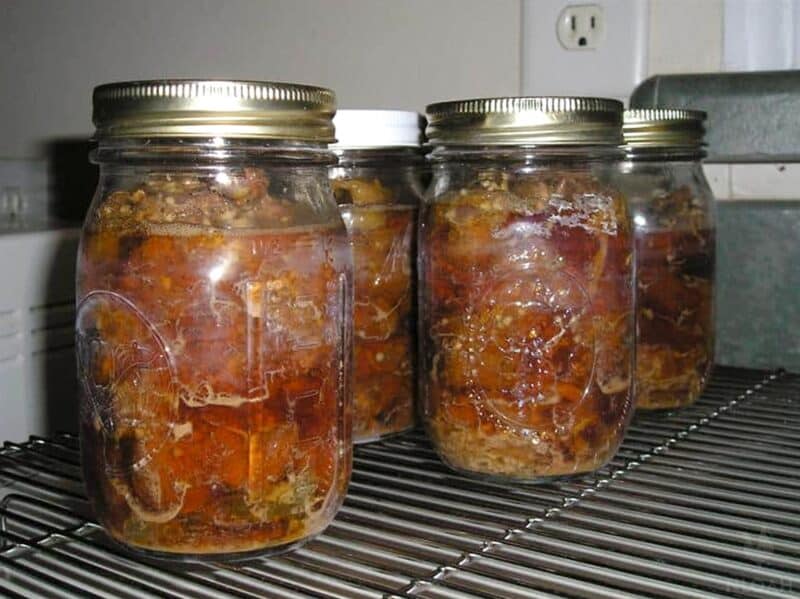
Preserve Meats Without Fear of it Spoiling
Whether you’re a backwoods hunter or a bargain hunter, canning your bulk meats is much safer and cheaper than freezing it.
Not only will it last for many years down the road, you’ll never have to worry about freezer burn or loss of electricity and the subsequent spoilage. Any kind of meat can be canned, even seafood.
Where frozen meat must be consumed within a year, canned meat will stay good for five or more years right on your pantry shelf.
The nutrients, flavor, and texture will gradually diminish over time, but the meat itself will be safe to consume as long as it was properly processed and the lid still has a strong seal.
Make Meals-In-A-Jar For Convenience
One of my absolute favorite things to can is meals-in-a-jar. You spend one day whipping up a big pot of soup, stew, or chili and can a bunch of it to re-heat and enjoy on days when you need a quick, nutritious meal.
They’ll save you money when the alternative would be to go out to eat or order take-out. They’re handy for last-minute dinner guests. They’re also great to bring to someone who is sick, or maybe somebody who just had a baby. They can heat it and enjoy it at their convenience.
Another benefit of having ready-made-meals on hand is that if you ever face a short- or long-term power outage you’ll have quick and easy meals already prepared- just heat and eat!
Make Thrifty Gifts For Friends and Family
Who wouldn’t love to receive a gift basket of home-canned goodies? The possibilities are endless:
- Assorted jams and jellies (you can do a floral theme and make flower infused jellies, such as violet, rose, dandelion, and honeysuckle jelly)
- Canned Chili and cornbread mix
- Chicken soup and crackers
- Hot Pepper Jelly, cream cheese and Ritz-style crackers, also known as Poor Man’s Caviar (to die for!)
- Home canned BBQ Sauce, spice rubs, and grill accessories
- Pickled Figs (As a friend of mine put it, “They taste like Christmas in a jar!”)
- Home canned Spaghetti Sauce, pasta, and a wooden spoon or two.
- Apple butter and homemade biscuits.
- Salsa and tortilla chips
- Marmalade and fresh fruit
- Homemade syrup, pancake mix, and a whisk
You get the idea! There are lots of fun gift baskets you can come up with using home canned food.
Be Prepared For Unexpected Emergencies
There are so many uncertainties in life. Job loss is a real possibility for many people in these times. Food shortages and empty grocery shelves are also possible in the near future.
Crop failures happen. Food prices continue to rise. Natural disasters can wreak havoc on towns, blocking roads and trapping people in their homes
It is foolish to go about your daily life with the assumption that you will always be able to run to the store when you need something to eat.
Stocking your pantry (whether it’s with home-canned goods, freeze dried foods, or store-bought stuff) is just plain wise. Remember the story of The Ant and The Grasshopper? There’s a good lesson to be learned there.
Start A Home Based Business
Something else you might want to consider after gaining some experience is starting a business selling your canned goods. Many people will pay good money for home canned specialty items.
Sell out of your home, set up at town fairs, consign them in local mom & pop stores, or even open an Etsy shop and ship jellies around the world.
You never know where the venture could take you. If you’re looking for a way to make a little (or a lot) of extra income from home, this may be the answer you’ve been seeking.
You might also consider teaching local canning classes once you get really good. There are so many ways to use this skill to prosper your family.
Ready To Get Started?
First you’ll need to get your hands on reliable resources. Let me just warn you- that does NOT include YouTube tutorials. I’ve seen some people do some scary and downright dangerous stuff when showing how to can on YouTube.
If you’re new to canning and don’t know what’s safe and what isn’t, please start with a trusted source.
So what do I recommend?
Disclosure: if you visit an external link in this post and make a purchase, I may earn a commission. Read my full earnings disclosure here.
First, get your hands on a Ball Blue Book. In it you will find all of the canning recipes you’ll need to get started. The Blue Book is the go-to resource for canning.
If you feel adventurous, I’d also recommend Jackie Clay’s book: Growing and Canning Your Own Food. I’ve found many tried-and-true recipes in her book that aren’t in the Ball Blue Book.
If you’re more of a visual learner and would prefer to watch somebody walk you step-by-step through the entire canning process, beginning to end, I would highly (and humbly) recommend my DVD: At Home Canning For Beginners and Beyond I created it with you in mind.

A city girl learning to homestead on an acre of land in the country. Wife and homeschooling mother of four. Enjoying life, and everything that has to do with self sufficient living.

I’ve been searching through books and the internet and cannot find anything that explains: Why is it necessary to remove the stem and blossom ends when preparing crabapples, pears, or apples if the fruits are washed thoroughly and boiled until mush (for processing in a Back2basics strainer)? My crabapples are small, so removing the stems and blossom ends is tedious and time consuming.
Ginny S.,
I remove the stem from the top, and cut out the dried blossom end part of the apple because these parts may cause a bitter taste in the end product.
Sometimes when I feel the top or wipe water from the top lid after canning, it pops from my touch. Are these jars considered sealed as long as they test secure?
Ginny S,
I know exactly what you’re talking about. I’ve done that many times, too. Yes, as long as the lid is still sealed after cooling for 24 hours it’s fine. 🙂
I have a question concerning the boiling water bath. After the water in the canner comes to a boil and then you load in the hot jars, do you begin counting the processing time right then or not until the water comes back to a full boil?
Ginny S.,
Wait until the water bath returns to a rolling boil before you start the time 🙂
All those gorgeous jars are making me hungry. Nice pantry selection and bravo on all that hard work!
Some of my best memories are canning with my mom when I was a young girl. After I married and had a family of my own l was lucky enough to live close and we canned together for many years. Mom is 86 now and hasn’t canned in years, but still enjoys home canned produce that I bring in to her. My children grew up on home canned food and have no food allergies and never got sick from anything, (always follow blue book recominations).I am now teaching my daughter-in-law to can and make jams and jelly and my ggranddaughter is learning from her mom.
Hi, I too love to can. I enjoy the process and knowing just exactly what is in my food. I am from South Mississippi and after going through 9 days without electricity and water when Hurricane Katrina hit I became a firm believer in canning. Everything in my freezer ruined and if it had not been for our volunteer fire department going around passing out water and MRE’s we would have been in serious trouble. I now can all summer the fresh produce so if we ever have a natural disaster we will have food!I just made crabapple jelly this weekend…so delicious 🙂
Do you store with the rings on? I heard that you shouldn’t do that.
Susan, sometimes I do leave them on, and sometimes I take them off if I need the rings to can more jars. It’s fine either way. If you do decide to leave the rings on, unscrew them after they’ve cooled from the canning process, wipe them down with a wet rag to remove any traces of food that might have leaked out, wash and dry the ring, and reapply it to the lid. If there is food on the lid/ring it will cause it to rust.
I so appreciate your DVD about home canning! It is not the first canning DVD I purchased but it is the most informative & clearly presented !!! I learned a great deal, found an excellent All American canner on ebay, and have been happily canning since! Thanks for sharing the info and providing the confidence to get me started!
I’m so happy to hear that, Anne!! Thank you for letting me know how you’ve enjoyed the DVD. I hope you’re able to get your hands on plenty to can this year!
I love canning. I must admit that I was in my late 30’s, early 40’s before I learned how to can. Now, it is what I want to do every summer. I love it! And since hubby has retired, he is getting into it too.
I gave a pregnant woman a jar of my homemade pickles with a pint container of ice cream as a “congratulations! on your pregnancy.” It was well-received. 🙂 Just another idea.
That’s an AWESOME idea, crafty_cristy!!! Love it!